Module 11 - Microwave Principles Pages
i,
1-1, 1-11,
1-21,
1-31,
1-41,
1-51,
1-61,
2-1,
2-11, 2-21,
2-31,
2-41,
2-51,
2-61,
3-1,
3-11,
AI-1,
Index-1,
Assignment 1,
Assignment 2
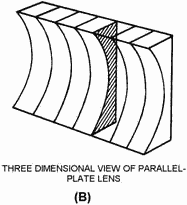
Figure 3-10B. - Waveguide lens. The radiated energy consists of an infinite number of RADIAL SECTIONS (RAYS). Each of the radial sections
contains mutually perpendicular E and H lines and both are perpendicular to the direction of travel. Because each
of the radial sections travels in a different direction, the point source, in itself, has poor directivity. The
purpose of the lens is to convert the input spherical microwave segment (which consists of all of the radial
sections) into parallel (collimated) lines in a given direction at the exit side of the lens. The focusing action
of the lens is accomplished by the refracting qualities of the metallic strips. The collimating effect of the lens
is possible because the velocity of electromagnetic energy propagation through metals is greater than its velocity
through air. Because of the concave construction of the lens, wavefronts arriving near the ends of the lens travel
farther in the same amount of time than do those at the center. Thus, the wavefront emerging from the exit side of
the lens appears as a plane wave. It consists of an infinite number of parallel sections (with both the E field
and H field components) mutually perpendicular to the direction of travel. Delay Lens Another type of lens that you may see is the Dielectric or METALLIC DELAY LENS shown in figure 3-11. The delay
lens, as its name implies, slows down the phase propagation (velocity) as the wave passes through the lens. The
delay lens is convex and is constructed of dielectric material. The delay in the phase of the wave passing through
the lens is determined by the Dielectric CONSTANT (REFRACTIVE Index) of the material. In most cases, artificial
dielectrics, consisting of conducting rods or spheres that are small compared to the wavelength, are used.
(Artificial dielectrics are of three-dimensional construction and act as a dielectric to electromagnetic waves.)
In this case the inner portion of the transmitted wave is decelerated for a longer interval of time than the outer
portions. The delay causes the radiated wave to be collimated.
3-11
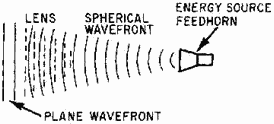
Figure 3-11. - Delay-type lens. Loaded Microwave Lens
The LoadED Microwave LENS, shown in figure 3-12, is a multi-cellular array of thousands of
cells. Each cell contains a slow-wave (delayed), serrated-metal, plastic-supported waveguide element which acts as
a phase-controlling device. a loaded lens can focus microwave energy in much the same way as the waveguide type.
The reason is that the speed of propagation is higher in the region between parallel plates than in free space.
The parallel plates support the cells.
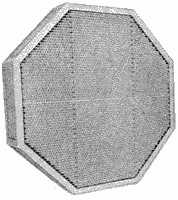
Figure 3-12. - Loaded lens. The lens shown in figure 3-12 has an egg-crate appearance because it is really two lenses occupying the
same volume. Vertical plates make up a lens that focuses a vertically polarized beam, and horizontal plates handle
beams which are horizontally polarized. In other words, this type of construction can be used in multiple-beam
applications where the polarization of the beams is different. Q-12. What is the purpose of a
collimating lens?
Q-13. How does a waveguide-type lens focus spherical wavefront microwave energy? Q-14. What
type of lens decelerates a portion of a spherical wavefront? 3-12
Antenna ARRAYS
Sharply directive antennas can be constructed from two or more simple half-wave dipole elements.
They must be positioned so that the fields from the elements add in some directions and cancel in others. Such a
set of antenna elements is called an Antenna ARRAY. When a reflector is placed behind the dipole array, radiation
occurs in one direction with a pattern similar to the one shown in figure 3-13.

Figure 3-13. - Field pattern of an antenna array. You will encounter two basic types of antenna arrays, PARASITIC and DRIVEN. Both types of antenna arrays
were explained in NEETS, Module 10, Introduction to Wave Propagation, Transmission Lines, and Antennas. Only a
brief review is presented in this chapter. The parabolic reflector antennas previously discussed and the antenna shown in figure 3-13 are examples of
parasitic arrays. Notice that the reflector in figure 3-13 is not directly connected to the energy source. Driven
arrays, in which all the radiating elements are connected to the energy source, have smaller losses than parasitic
arrays while retaining some of the narrow-beam characteristics. Parasitic arrays, such as the parabolic reflector,
are used primarily as antennas in fire control radars and other installations, such as microwave communication
systems, that require very accurate (narrow) beams. Driven arrays are used primarily as search-radar antennas
because extremely narrow beams are less critical than low losses. If you position a number of driven
half-wave antenna elements with respect to each other so that energy from the individual elements will add in
certain directions and cancel in other directions, then the antenna system is directional. Signals from a
number of different sources may contribute to or subtract from the overall effect. By properly phasing the energy
fed to the antenna elements, and by properly locating the elements, you can control the direction of the energy.
You can cause the energy to add in the desired direction and to be out of phase (cancel) in the undesired
direction. Driven arrays are usually made up of a number of half-wave dipoles positioned and phased so
that the desired directional pattern will be achieved. Figure 3-14, view (A), shows a simple antenna array 3-13
consisting of two horizontally mounted elements, each a half wavelength long and fed in
phase. The resulting radiation pattern is in a direction at right angles to the plane containing the antenna
conductor.

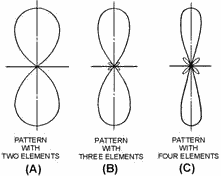
Figure 3-14. - Horizontal array field patterns. Three- and four-element arrays are shown in figure 3-14, views (B) and (C), respectively. The field
pattern of each array is shown beneath it. Note that the beam becomes sharper as the number of elements is
increased. If a still-narrower beam is desired, you may add additional elements. The field patterns of the
antennas in the figure are bidirectional. Unidirectional patterns may be obtained with a parasitic reflector
mounted behind the driven antenna elements. The BEDSPRING ARRAY (figure 3-15), so called because of its
resemblance to a bedspring, is an example of a unidirectional antenna. It consists of a stacked dipole array with
an untuned reflector. The more dipoles that are used or stacked in one dimension (horizontal, for example), the
more narrow the beam of radiated energy becomes in that plane. Consequently, the size of the antenna is not the
same for all installations. Antennas such as the bedspring array are commonly used in TWO-DIMENSIONAL SEARCH
RadarS that obtain the range and bearing information of a target.
3-14
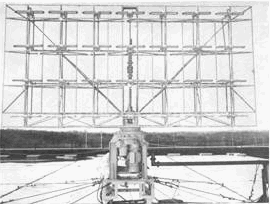
Figure 3-15. - Bedspring array. Frequency-SENSITIVE Antenna The radar antenna in figure 3-16 uses a feed section to
drive horizontally stacked array sections which radiate the applied RF pulses. The same array sections receive the
target returns. Each array contains slots cut to radiate and receive a particular frequency. Bearing data is
obtained by mechanically rotating the antenna 360 degrees. Elevation data is obtained by electronic scanning of
the beam in elevation. The radar antenna is frequency sensitive and radiates pulses at an elevation angle
determined by the applied frequency. When the frequency is increased, the beam elevation angle decreases.
Conversely, when the applied frequency is decreased, the beam elevation angle increases. The beam elevation angle
is therefore selected by the application of a frequency corresponding to the desired angle of elevation. The
physical length of the antenna feed section, called the SERPENTINE SECTION (figure 3-17), in relation to the
wavelength of the applied energy determines the direction of the radiated beam. You may understand this more
clearly if you consider how the beam is shifted. The shift occurs with a change in frequency because the positive
and negative peaks of the energy arrive at adjacent slotted arrays at different times. The change in the field
pattern is such that the angle of departure (angle at which the radiated beam leaves the antenna) of the beam is
changed. Note that a change in phase of the applied RF energy would cause the same effect.
3-15

Figure 3-16. - Frequency-sensitive antenna. 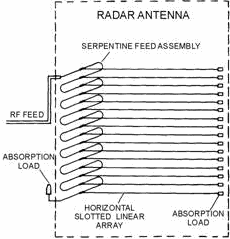
Figure 3-17. - Serpentine feed. A SLOT Antenna exhibits many of the characteristics of a conventional dipole antenna.
When arranged in arrays, a high degree of directivity can be obtained. Also, the beam can be caused to scan a
volume of space by changing either the frequency or phase of the energy driving the antenna elements. 3-16
Basic Slot Antenna and Its Complementary Dipole The slot antenna consists of
a radiator formed by cutting a narrow slot in a large metal surface. Such an antenna is shown in figure 3-18. The
slot length is a half wavelength at the desired frequency and the width is a small fraction of a wavelength. The
antenna is frequently compared to a conventional half- wave dipole consisting of two flat metal strips. The
physical dimensions of the metal strips are such that they would just fit into the slot cut out of the large metal
sheet.
This type of antenna is called the COMPLEMENTARY DIPOLE.
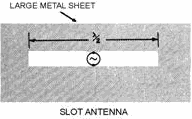

Figure 3-18. - Slot antenna and complementary dipole. The slot antenna is compared to its complementary dipole to illustrate that the radiation patterns
produced by a slot antenna cut into an infinitely large metal sheet and that of the complementary dipole antenna
are the same. Several important differences exist between the slot antenna and its complementary antenna.
First, the electric and magnetic fields are interchanged. In the case of the dipole antenna shown in figure 3-18,
the electric lines are horizontal while the magnetic lines form loops in the vertical plane. With the slot
antenna, the magnetic lines are horizontal and the electric lines are vertical. The electric lines are built up
across the narrow dimensions of the slot. As a result, the polarization of the radiation produced by a horizontal
slot is vertical. If a vertical slot is used, the polarization is horizontal. A second difference between
the slot antenna and its complementary dipole is that the direction of the lines of electric and magnetic force
abruptly reverse from one side of the metal sheet to the other. In the case of the dipole, the electric lines have
the same general direction while the magnetic lines form continuous closed loops. When energy is applied
to the slot antenna, currents flow in the metal sheet. These currents are not confined to the edges of the slot
but rather spread out over the sheet. Radiation then takes place from both sides of the sheet. In the case of the
complementary dipole, however, the currents are more confined; so a much greater magnitude of current is required
to produce a given power output using the dipole antenna. 3-17
The current distribution of the dipole resembles the voltage distribution of the slot. The edges on
the slot have a high voltage concentration and relatively low current distribution; the complementary dipole has a
high current concentration and relatively low voltage. Slot antennas are adaptable for the vhf and uhf
ranges. One of their practical advantages is that the feed section which energizes the slot may be placed below
the large metal surface in which the slot is cut. Thus, nothing needs to extend from the surface. In addition, the
slot itself may be covered by a section of insulating material to provide a seal so that the antenna can be
pressurized with dry air. Dry air pressurization reduces moisture in the waveguide and prevents arcing. Many of the new radar systems reaching the fleet over the next few years will use frequency- or phase-sensitive
antennas. Some of the new radars will use antennas that electronically scan the azimuth as well as elevation,
eliminating the moving antenna.
Q-15. What is a set of antenna elements called? Q-16. What type of antenna has all elements
connected to the same energy source? Q-17. What determines the beam elevation angle of an antenna that
is electronically scanned in elevation? Q-18. What is the polarization of the energy radiated by a
vertical slot?
Summary This chapter has presented information on the characteristics of
microwave antennas. The information that follows summarizes the important points of this chapter. The
Antenna Characteristics of microwave and low-frequency antennas are essentially the same. The efficiency
of an antenna is expressed as a Power Gain or Power RATIO as compared to a standard reference antenna. The
Standing WAVE RATIO (SWR) is a measurement of the impedance mismatch between a transmission line and its load and
is an indicator of overall system efficiency. DirectIVITY refers to the direction in
which an antenna radiates and the narrowness of the radiated beam in DirectIONAL Antennas.
OMNIDirectIONAL Antennas
radiate and receive in all directions at once. RECIPROCITY is the ability of an antenna
to both transmit and receive electromagnetic energy. Reflector Antennas are antennas that use a reflector to focus electromagnetic energy into a beam that is directional in either the vertical plane, the
horizontal plane, or both planes at once. The basic PARABOLIC Reflector shown in the illustration, or one of its
variations, is most often used. 3-18

LENS Antennas use a COLLIMATING LENS to force the spherical
components of a wavefront into parallel (focused) paths by delaying or accelerating portions of the wavefronts, as
shown in the illustration.
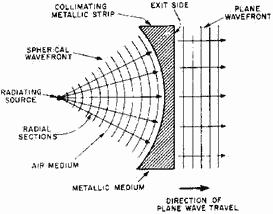
An Antenna ARRAY is a set of antenna elements and may be one of two basic types, the
DRIVEN ARRAY or the PARASITIC ARRAY. Frequency-SENSITIVE Antennas use frequency-sensitive
slots as radiation sources to achieve directivity. The angle at which the radiated beam leaves the antenna is
determined by the frequency of the radiated energy. Currently the most common frequency-sensitive antennas use
this feature to achieve elevation coverage while azimuth coverage is achieved by rotating the antennas. New
systems will use stationary frequency-sensitive antennas to achieve both azimuth and elevation coverage. Answers to Questions Q1. Through Q18. A-1. Operating principles and electrical characteristics. A-2. Power gain or power ratio. A-3.
Standing-wave ratio (SWR). 3-19
A-4. Omnidirectional. A-5. Antenna directivity. A-6. Reciprocity. A-7.
Parabolic.
A-8. Light waves. A-9. One. A-10. Determine elevation. A-11. Vertical. A-12.
Forces the radial segments of a wavefront into parallel paths. A-13. Some wavefronts are accelerated so
that all wavefronts exit the lens at the same time. A-14. Delay lens. A-15. Antenna Array. A-16. Driven Array. A-17. Frequency or phase of radiated energy. A-18. Horizontal. 3-20
| - |
Matter, Energy,
and Direct Current |
| - |
Alternating Current and Transformers |
| - |
Circuit Protection, Control, and Measurement |
| - |
Electrical Conductors, Wiring Techniques,
and Schematic Reading |
| - |
Generators and Motors |
| - |
Electronic Emission, Tubes, and Power Supplies |
| - |
Solid-State Devices and Power Supplies |
| - |
Amplifiers |
| - |
Wave-Generation and Wave-Shaping Circuits |
| - |
Wave Propagation, Transmission Lines, and
Antennas |
| - |
Microwave Principles |
| - |
Modulation Principles |
| - |
Introduction to Number Systems and Logic Circuits |
| - |
- Introduction to Microelectronics |
| - |
Principles of Synchros, Servos, and Gyros |
| - |
Introduction to Test Equipment |
| - |
Radio-Frequency Communications Principles |
| - |
Radar Principles |
| - |
The Technician's Handbook, Master Glossary |
| - |
Test Methods and Practices |
| - |
Introduction to Digital Computers |
| - |
Magnetic Recording |
| - |
Introduction to Fiber Optics |
| Note: Navy Electricity and Electronics Training
Series (NEETS) content is U.S. Navy property in the public domain. |
|





















